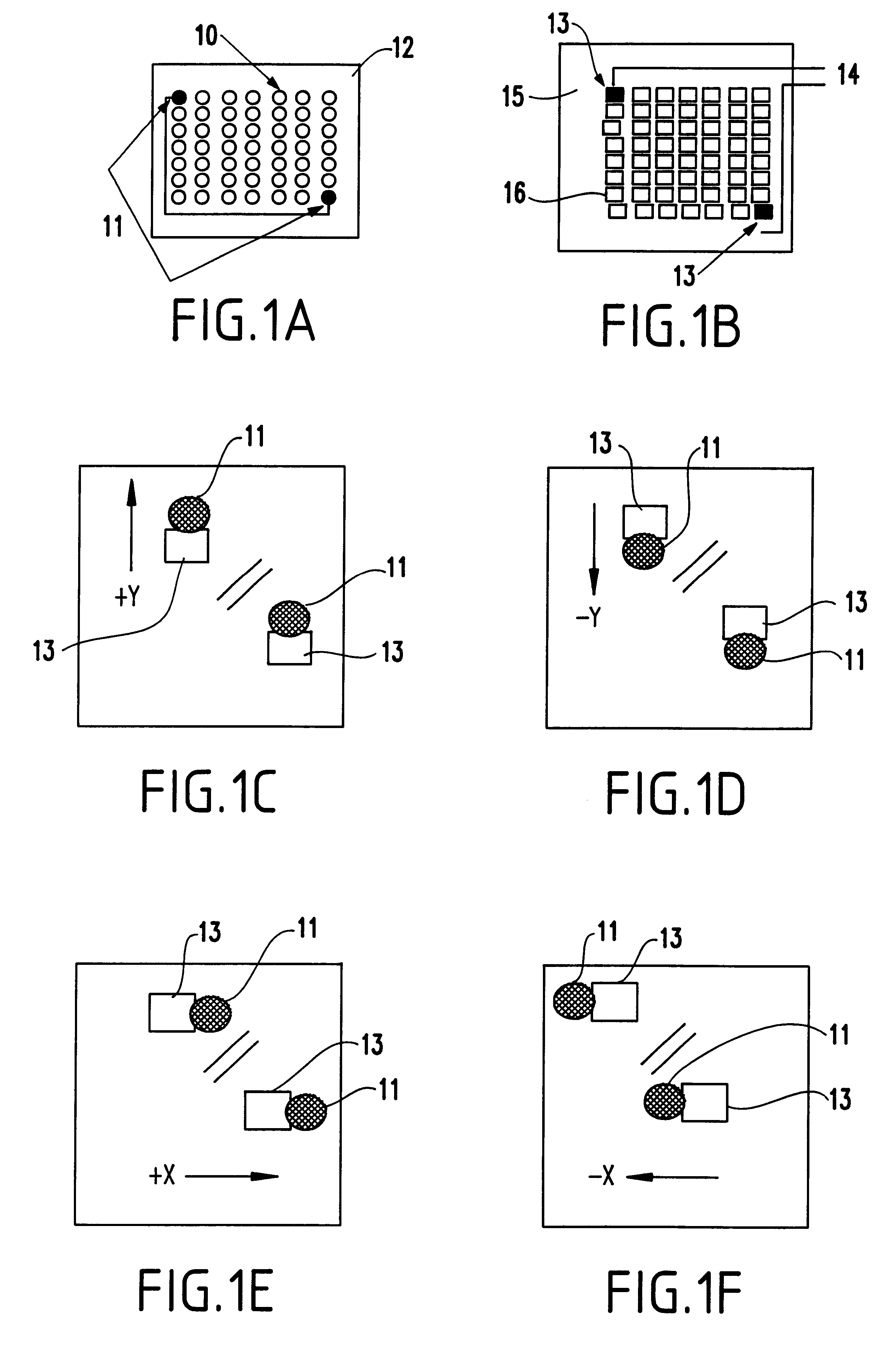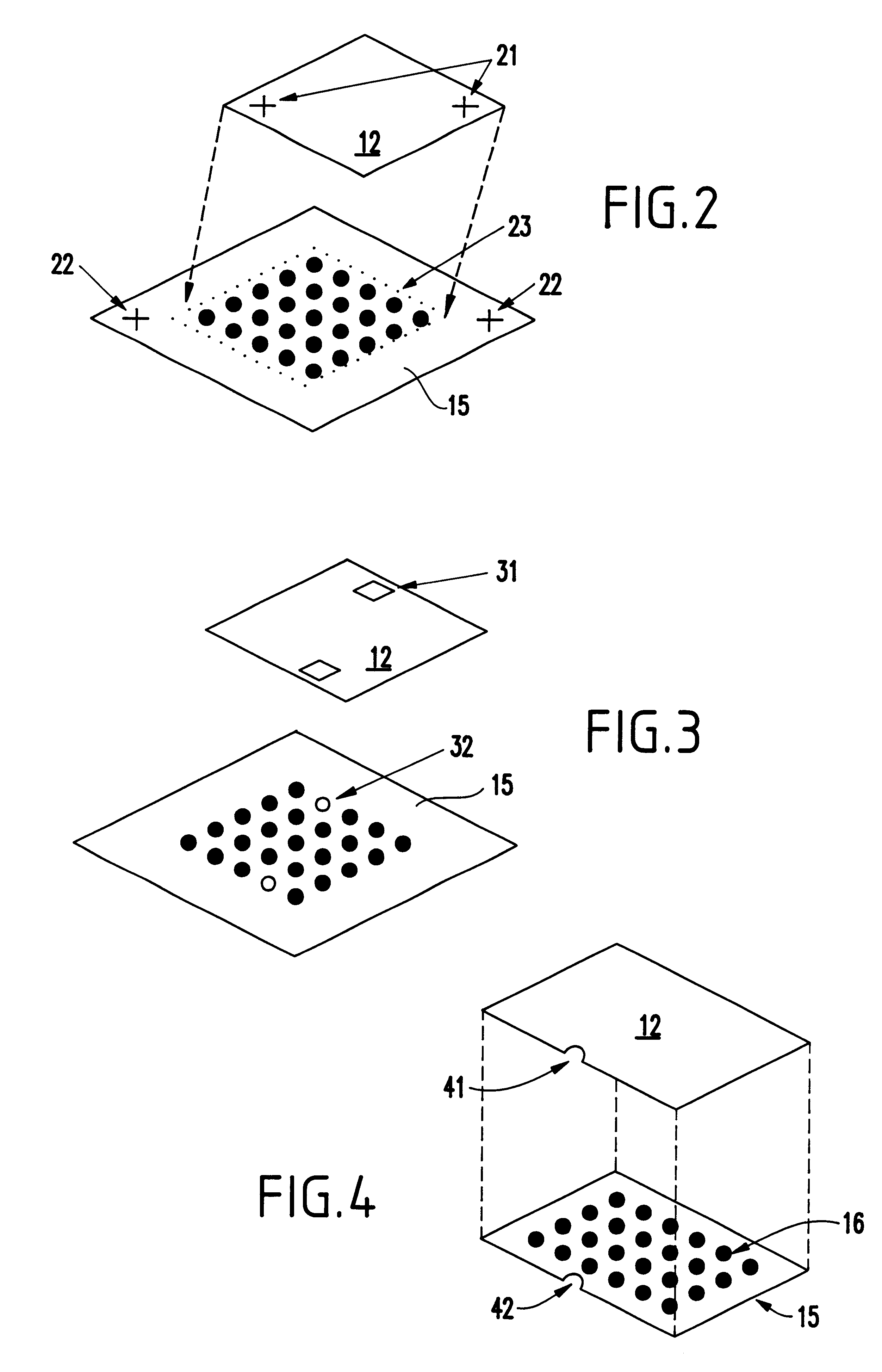Optical sensing method to place flip chips
- Summary
- Abstract
- Description
- Claims
- Application Information
AI Technical Summary
Benefits of technology
Problems solved by technology
Method used
Image
Examples
first embodiment
Referring now to the drawings, and more particularly to FIGS. 1A-1F, the invention is illustrated. FIG. 1A illustrates a connection side (e.g., lower or front side) of a chip 12 (e.g., semiconductor or other integrated circuit chip, such as a flip-chip or other similar devices) and FIG. 1B illustrates the connection side (e.g., upper or back side) of a substrate 15 (such as a rigid or flexible semiconductor substrate).
The chip pads 10 (e.g., conductors) are aligned and electrically connected to the substrate pads 16 by solder reflow, thermo-compression, or conductive adhesives, as discussed above. As also discussed above, the pads 10, 16 are input / output devices which allow signals to be transferred between the substrate 15 and the chip 12.
To verify alignment of the chip 12 and substrate 15, chip alignment pads connect with substrate alignment pads 13. As shown in FIGS. 1C-1F, the alignment pads 11, 13 will be aligned in the + / -Y-directions (FIGS. 1C-1D) and in the + / -X-directions (...
second embodiment
the invention produces advantages similar to the first embodiment by allowing visual inspection of the alignment of the chip pads and the substrate pads 15 from a single viewing location. As with the previous embodiment, the invention reduces the complexity of the alignment and attachment process and increases the ease of post-attachment inspection. Once again, these advantages are obtained because the alignment feature is chip-based and not external to the chip.
third embodiment
the invention is illustrated in FIG. 4. Again, in FIG. 4, the chip 12 and the substrate 15 are shown. However, in FIG. 4 the chip includes a chip alignment notch 41, and the substrate 15 includes a substrate alignment notch 42.
Again, as with the previous embodiments, the chip alignment notch 41 corresponds to the location of the chip pads 10. The substrate alignment notch 42 similarly corresponds to the substrate pads 16. Therefore, when the alignment notches 41, 42 are aligned, the chip pads 10 and the substrate pads 16 will also be aligned.
The notches 41, 42 accurately map the chip edge to the chip pad locations. A placement tool could use these notches 41, 42 as references to align the chip pads 10 with the substrate pads. The sides of the chip 12 and substrate 15 could be accurately diced or re-diced to provide the accurate edge relationship to the chip pads. Only enough of two edges need to be used for the placement. Thus, partially dressed edges would be consistent with the in...
PUM
 Login to View More
Login to View More Abstract
Description
Claims
Application Information
 Login to View More
Login to View More - R&D
- Intellectual Property
- Life Sciences
- Materials
- Tech Scout
- Unparalleled Data Quality
- Higher Quality Content
- 60% Fewer Hallucinations
Browse by: Latest US Patents, China's latest patents, Technical Efficacy Thesaurus, Application Domain, Technology Topic, Popular Technical Reports.
© 2025 PatSnap. All rights reserved.Legal|Privacy policy|Modern Slavery Act Transparency Statement|Sitemap|About US| Contact US: help@patsnap.com



